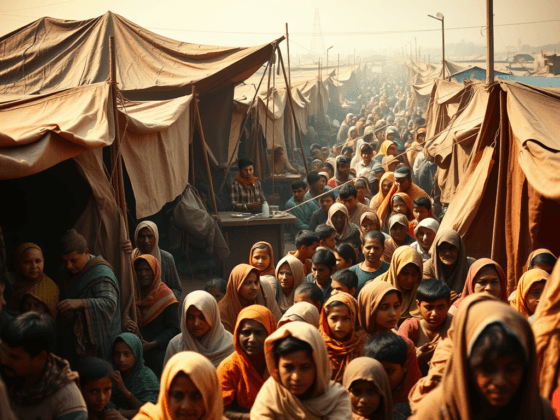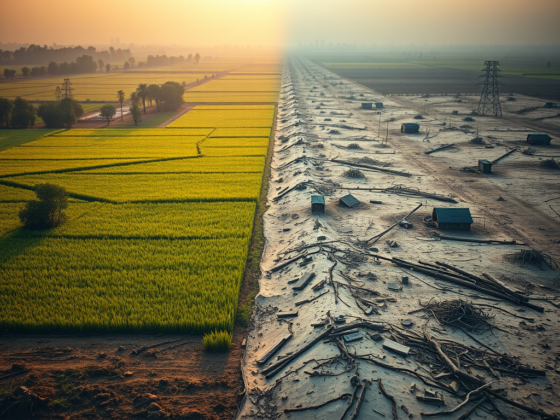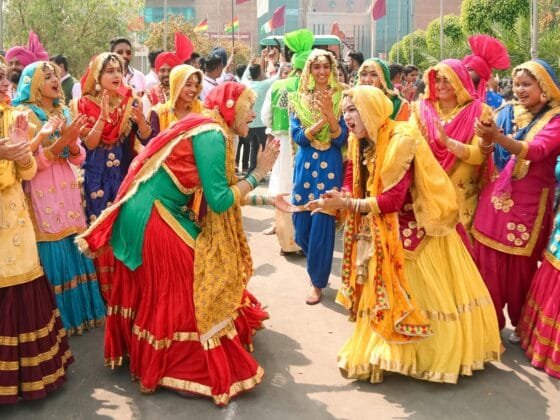Introduction
It is observed by UNESCO in 1998, when it established the International Institute for the Study of Nomadic Civilizations that nomads have inhabited vast swaths of the globe for thousands of years. Nomadic societies developed cultural forms that were specifically tailored to their environment and mobility conditions, as well as the demands and possibilities of their way of life. They have created an undeniable commitment to the growth of various techniques and methods of using land and sea, which have resulted in the creation of original and, in some cases, unique civilizations.
Today, in various districts of the world, nomadic populations are confronted with critical difficulties to their ongoing presence, future practicality, and particularly their social personality. Many are experiencing the downfall of their customary social designs and poverty from marginalization.
Who is Khanabadosh?

Khanabadosh is an Urdu term that means nomads. This term is denoted a gypsy community. Nomads are people who travel from one location to another in search of food. A vagabond, traveler, or someone who does not live in one place. Hunter-gatherers, pastoral nomads (those who own livestock), tinkers, and trader nomads are examples of such groups.
Life of Khanabadosh

India has one of the world’s largest nomadic and semi-nomadic populations, with an estimated 1.5 crore people. These communities are unique and egalitarian, consisting of 666 different communities with diverse socio-cultural practices. These communities, which are now marginalized, neglected, and disenfranchised, these communities were once essential to India’s financial texture – as dealers, shippers, craftspersons, artists, and suppliers of other critical services.
Under the Criminal Tribes Act of 1871, The British labeled these communities as “criminal tribes” due to their immense awareness of shipping routes, a powerful position as economic movers, and dexterity in developing indigenous tools and instruments. This assault on their freedom to move across land put an end to a few of their customary occupations and disabled these flexible networks.
Not much has changed in the nearly 70 years since the Government of India revoked the Criminal Tribes Act and de-notified these communities. These communities are still stereotyped and downtrodden, with no way to live a dignified life. Except for those who have been included in the respective state lists, the majority of the de-notified communities are not classified as Schedule Caste (SC) or Schedule Tribe (ST). Despite being oppressed for centuries, they have not received adequate constitutional protection.
Today, these migratory communities that are engaged in activities other than agriculture can be broadly classified into four categories:
- Shepherds and hunter-gatherers
- Providers of goods transportation services
- Artists, artisans, and performers
- Religious ritual practitioners and performers.
The government has provided very little assistance or support to de-notified, nomadic, and semi-nomadic communities in independent India. Because of the nomadic nature of most of these communities and the remote location of the small settled population, even civil society initiatives have been limited and unorganized.
Most citizens of these communities are totally unaware of this commission’s recommendations or any other benefits are given to them through government programs due to a serious lack of access and literacy. There is an urgent need for these communities to be aware of even the most fundamental constitutional rights and entitlements.
Current Status and struggles of Khanabadosh:

Proceeded with Stigma: Though the supposed criminal clans have been de-notified, there is proceeded disgrace around the de-notified clans. However the innate criminal tendency has been revoked by the law, it is as yet present through accepted practices. Because of the ‘social tag’ of so-called ‘criminality,’ the individuals from the local area are as yet confronting issues of mistrust by other non-local area individuals proceeded exclusion in the standard society and oppressive way of behaving towards the members of the society.
Private Jobs: Generally, job applications for private jobs or verification include the declaration of the applicants’ addresses. However, the DNTs continue to live in colonies named after their castes, such as Chhara Nagar. When hiring managers examine the declared address, it is very easy to know that the applicant is a member of the DNT community, and thus the job opportunity is rejected by the applicant.
Refusal of Admission: Students from the community face discrimination when applying for admission to schools and colleges. The column ‘Caste’ appears on the admission form of educational institutions. The student’s declaration of belonging to the De-notified or nomadic tribe is the source of discrimination, and students are denied admission to private schools on the grounds of belonging to the De-notified or nomadic tribes.
Lack of political will: Members of the DNT community are dispersed all across the country. The lack of large people residing together makes it difficult for the community to exert pressure on political parties or individuals running for office. Because of few individuals living in an area, their necessities are many times overlooked by the political agents, and thus the local area is battling to progress. Because of the dissipated local area, the individuals are not getting effective in making the development of equity.
Absence of Financial Support: Though a different commission for Nomadic and De-notified Tribes was organized in 2006, the legislatures over the years have shown minimal purpose in the designation of the spending plan for the government assistance of the DNT people group.
Conclusion
Khanabadosh assumes a significant part in the growth of society. The government ought to recognize their reality during urban preparation and progress. Meanwhile, to strengthen the monetary state of Khanabadosh, government and non-government associations ought to present such procedures which include and urges this local area to turn out to be important for mainstream society.
Sustainable income growth also has a positive effect on the environment. It is time to make the Khanabadosh families understand that they are entitled to equal rights. Seminars, conferences, and community talks should be motivated within these communities in order to spread the word about their existence. An expert from any field of work like architects, specialists, and investors can assume their part in the acknowledgment and development of the Khanabadosh people group. This will not only assist them to stabilize their income, but it will also make the country build better economic figures and reduce the poverty ratio.

 Add to favorites
Add to favorites








